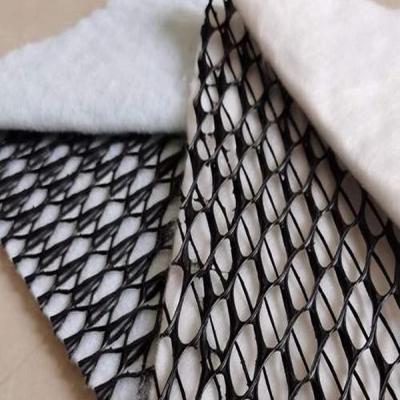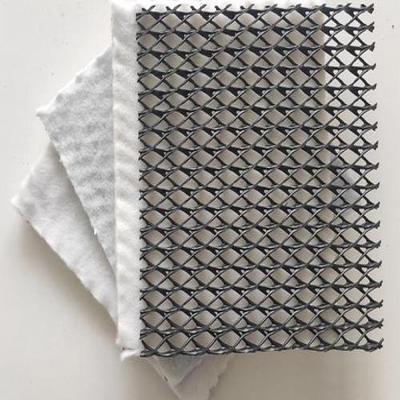1. Structure and function of three-dimensional composite drainage network
The three-dimensional composite drainage network is processed by a special process of polymer materials such as high-density polyethylene (HDPE) and has three special structures: the middle ribs are rigid and arranged longitudinally to form drainage channels; the ribs are arranged crosswise and formed. Support to prevent geotextile from embedded in drainage channels, maintaining high drainage performance even under high loads. Therefore, it not only has very good drainage performance, but also has very good anti-filtration, breathability and protection functions.
2. The main indicators of three-dimensional composite drainage network
1. Mass per unit area: Mass per unit area is an important indicator for measuring the thickness and weight of the three-dimensional composite drainage network material. Generally speaking, the greater the mass per unit area, the better the strength and durability of the material, but the cost will also increase. Therefore, when choosing, trade-offs should be made based on project needs and budget.
2. Thickness: Thickness is an important reflection of the physical properties of three-dimensional composite drainage networks. Thicker materials have better compressive resistance and drainage properties, but they will also increase material cost and construction difficulty. Choose the appropriate thickness according to the actual situation of the project.
3. Tensile strength: Tensile strength is a key indicator for measuring the mechanical properties of three-dimensional composite drainage networks. It reflects the material’s load-bearing capacity in the tensile direction. In water conservancy projects and civil engineering, materials with high tensile strength can better resist water flow erosion and soil deformation, ensuring the stability and safety of the engineering structure.
4. Compressive strength: Compressive strength refers to the load-bearing capacity of the three-dimensional composite drainage network in the vertical direction. For projects that need to withstand large loads, such as highways, railway subgrades, etc., compressive strength is very important.
5. Drainage performance: Drainage performance is one of the core functions of the three-dimensional composite drainage network. It has parameters such as permeability and flow rate, which can reflect the efficiency and ability of the material during drainage. Good drainage performance can reduce the water pressure in the soil, prevent the soil from liquefaction and sliding, and improve the stability and safety of the project.
6. Weather resistance and corrosion resistance: In outdoor environments, the three-dimensional composite drainage network must withstand harsh conditions such as wind, sun, rain erosion. Therefore, weather resistance and corrosion resistance are important indicators for measuring its service life and performance. Choosing materials with good weather resistance and corrosion resistance can ensure the stability and safety of the project during long-term operation.
3. Suggestions for choosing a three-dimensional composite drainage network
When choosing a three-dimensional composite drainage network, it is necessary to consider comprehensively based on factors such as engineering needs, geological conditions, construction difficulty and cost budget. It is recommended to choose a three-dimensional composite drainage network with high strength, high modulus and good drainage performance for projects that require rapid construction, low cost and low strength requirements. For engineering, you can choose materials with moderate performance and low cost.
Post time: Feb-24-2025





